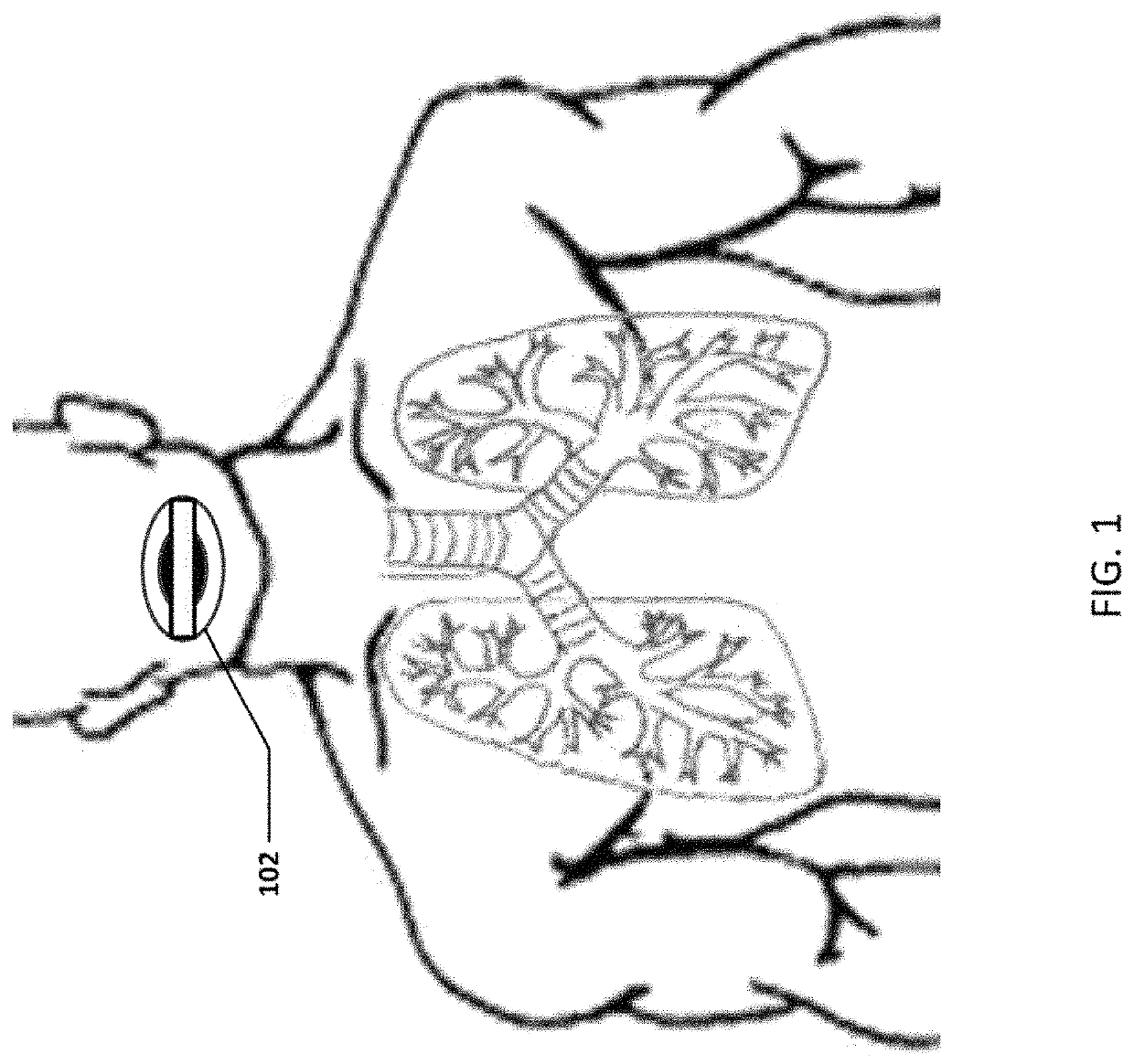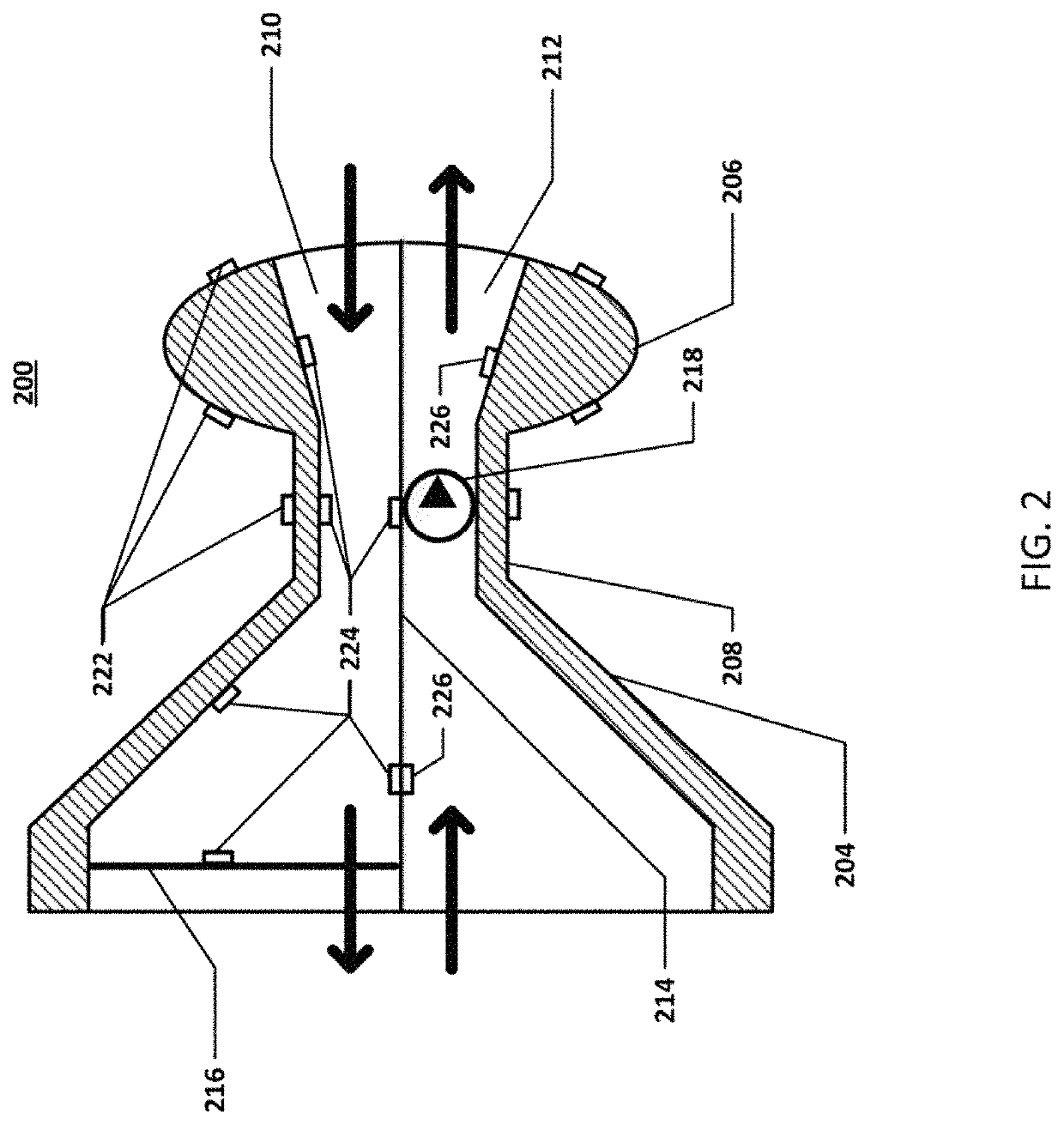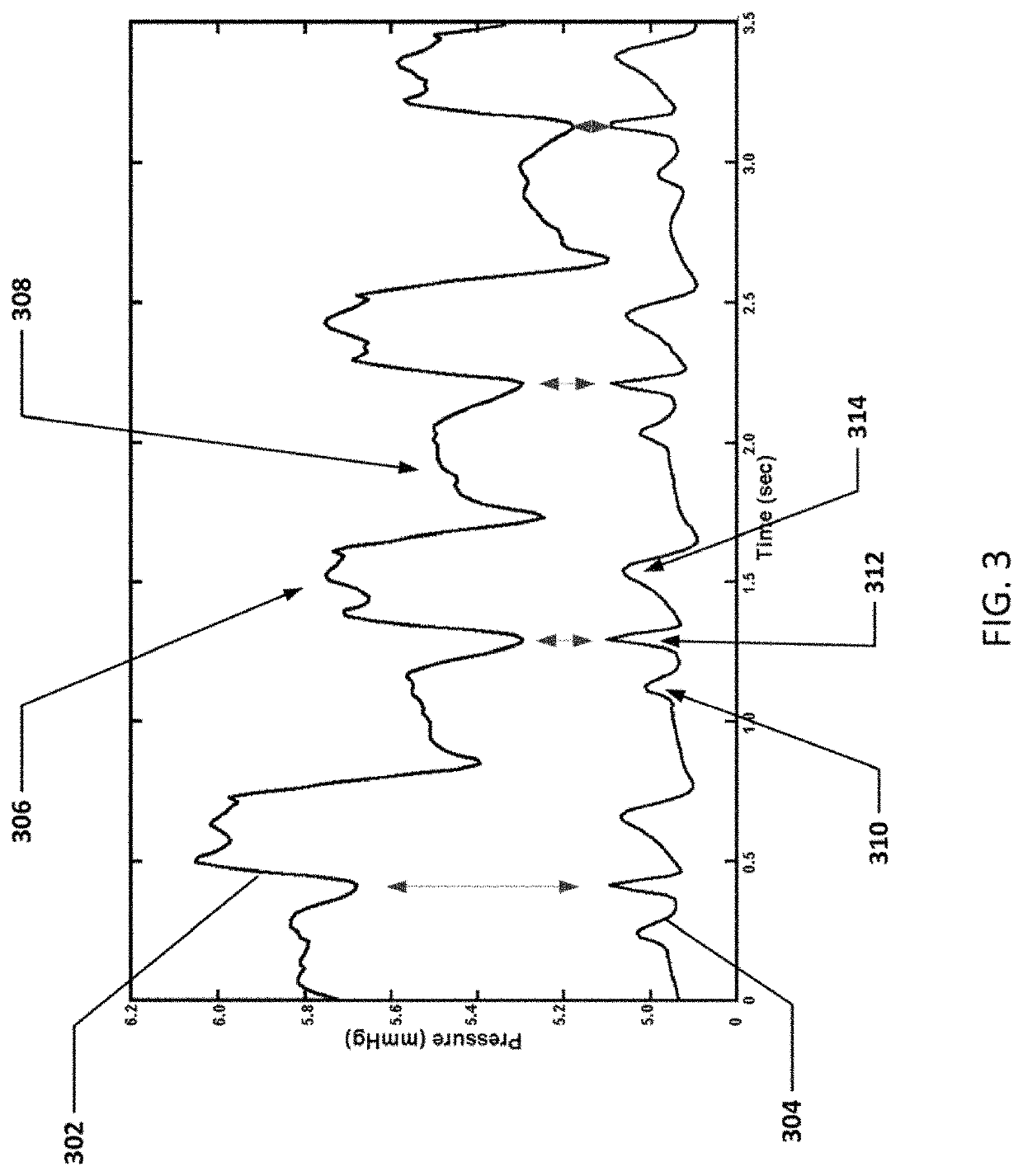Devices and methods for monitoring physiologic parameters
a technology of physiologic parameters and devices, applied in the field of monitoring cardiac function, can solve the problems of acute decompensation, inability to predict decompensation risk with sufficient resolution, and hospitalization rate, and achieve the effects of reducing stoke volume, reducing lung volume, and increasing pulmonary artery pressur
- Summary
- Abstract
- Description
- Claims
- Application Information
AI Technical Summary
Benefits of technology
Problems solved by technology
Method used
Image
Examples
Embodiment Construction
[0059]FIG. 1 shows an embodiment of the airway device worn in the mouth of a patient. One of the advantages of a portable embodiment, such as this one, is that it can be worn by a subject that is not only awake and not intubated, but upright and active. In other words, the use of the airway device is not limited to patients on a ventilator or other stationary medical device. The airway device / controller may be used on a patient / user with no additional ventilation support, or airway pressure support. Said another way, the airway device / controller may be used on a patient without a ventilator or CPAP machine or additional flow source, or any sort of artificial ventilation or airway pressure support. The airway device / controller may be used by patients / users who are breathing naturally or normally, or may be used in a “prompt mode”, where the controller prompts the user to do something other than breathe naturally. For example, the controller may prompt the user to hold his / her breath,...
PUM
 Login to View More
Login to View More Abstract
Description
Claims
Application Information
 Login to View More
Login to View More - R&D
- Intellectual Property
- Life Sciences
- Materials
- Tech Scout
- Unparalleled Data Quality
- Higher Quality Content
- 60% Fewer Hallucinations
Browse by: Latest US Patents, China's latest patents, Technical Efficacy Thesaurus, Application Domain, Technology Topic, Popular Technical Reports.
© 2025 PatSnap. All rights reserved.Legal|Privacy policy|Modern Slavery Act Transparency Statement|Sitemap|About US| Contact US: help@patsnap.com



